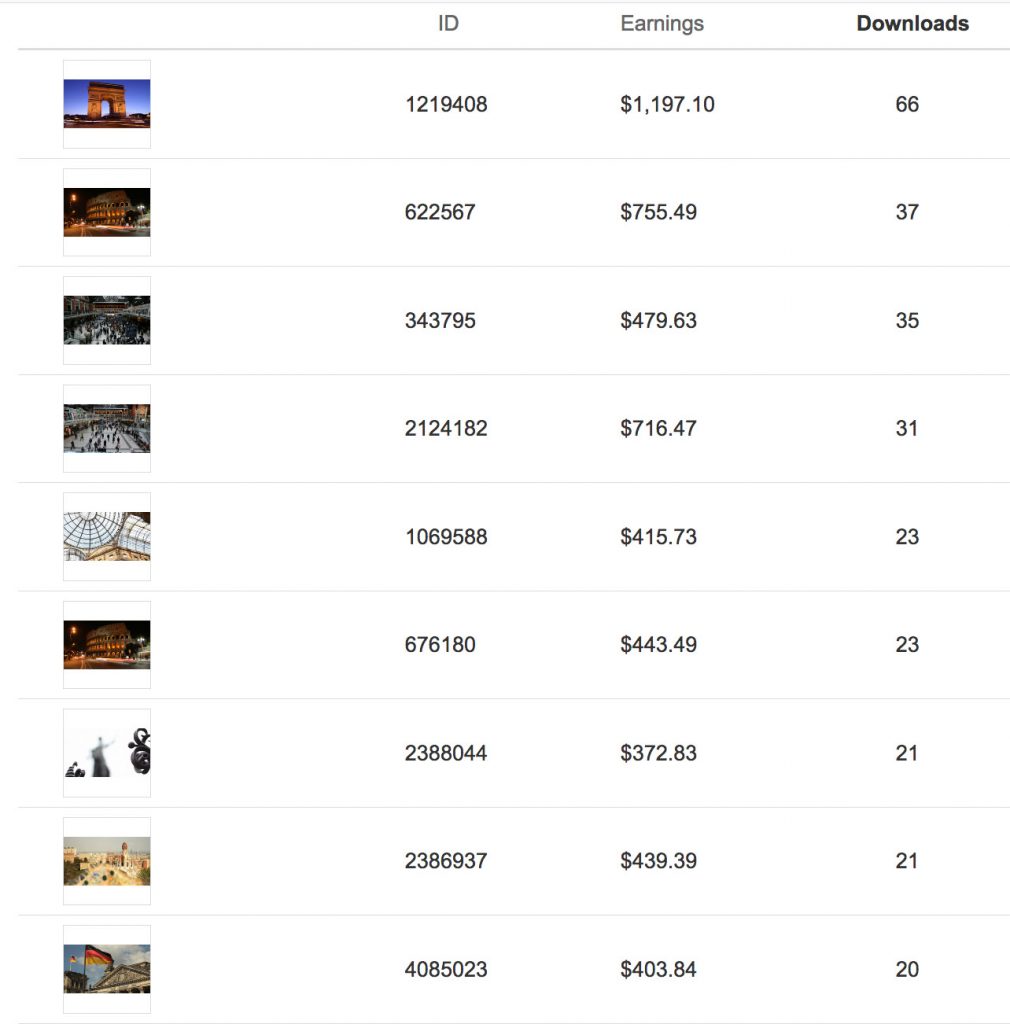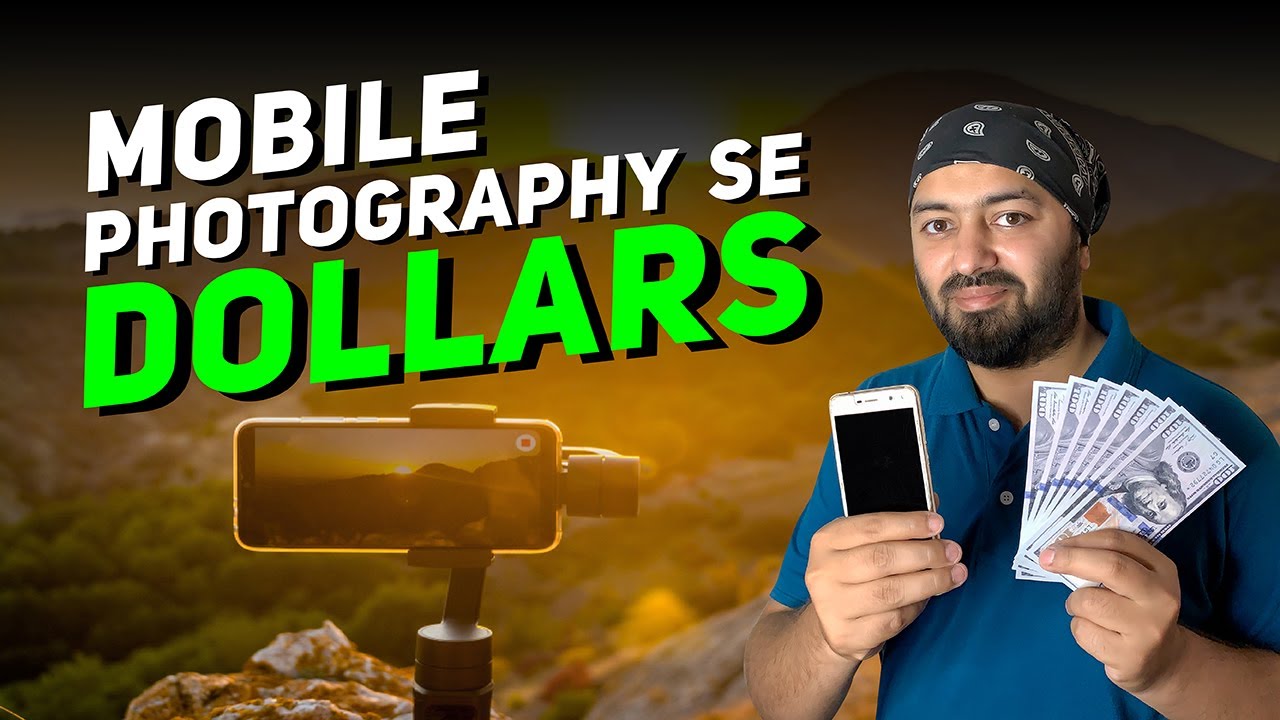Have you ever wondered if your photos could turn into a steady paycheck? Shutterstock is one of the biggest platforms out there for photographers and artists to showcase their work and earn money. Whether you’re a hobbyist or a professional, Shutterstock provides a fantastic opportunity to monetize your creativity. But how much can you really earn? The answer depends on several factors like the quality of your images, how often you upload, and the demand for your style. In this post, we’ll explore how
Understanding Shutterstock’s Contributor Program

Shutterstock‘s Contributor Program is designed to make it easy for photographers and artists to sell their work to a global audience. When you join as a contributor, you can upload your photos, illustrations, vectors, and videos to the platform. Here’s how it works:
- Sign Up and Upload: Create a free account, then start uploading your best work. Quality and relevance are key—high-resolution images that meet Shutterstock’s standards perform better.
- Review Process: Shutterstock reviews your submissions to ensure they meet quality guidelines. Once approved, your images go live and are available for licensing.
- Earn Royalties: Every time someone downloads your content, you earn a royalty. The amount varies based on your exclusive or non-exclusive status and your earnings tier.
Shutterstock offers a tiered royalty system that rewards contributors based on their lifetime earnings and the number of downloads. For example, new contributors initially earn a certain percentage, which can increase over time as you generate more sales. The platform also provides clear dashboards where you can track your earnings and see which images are performing best.
One of the biggest advantages is that Shutterstock handles all the licensing and payments, so you focus on creating great content. Plus, with millions of active buyers worldwide, there’s a huge potential audience for your photos. The key to maximizing your earnings is uploading high-quality, relevant images regularly and paying attention to trending topics and popular categories.
Factors That Influence Your Earnings from Photos on Shutterstock

When it comes to earning money from your photos on Shutterstock, there’s no one-size-fits-all answer. Your income can vary widely depending on several key factors. Understanding what influences your earnings can help you make strategic decisions to maximize your potential.
First off, the quality of your photos plays a huge role. Shutterstock tends to favor images that are sharp, well-lit, and properly composed. High-quality images are more likely to be downloaded because they meet professional standards and look appealing to buyers.
Next, the niche or subject matter of your photos matters. Some categories, like business, technology, or lifestyle, tend to be in higher demand. Unique or trending topics can also boost your chances of earning more because they attract more searches.
Number of downloads is directly linked to your earnings. The more your images are downloaded, the more money you make. But it’s not just about quantity—fewer, highly sought-after images can sometimes outperform dozens of less popular ones.
Another important factor is your contributor level. Shutterstock has a tiered system (Contributor, Premier, etc.), and as you progress, you often unlock higher earning rates. Building a strong portfolio and consistently uploading quality images can help you climb these levels.
Your geographic location can also influence earnings, especially if you target local or regional content that appeals to specific markets. Additionally, keywording and metadata are crucial; properly tagging your images ensures they appear in relevant searches, increasing their visibility and download potential.
Lastly, licensing options can impact your earnings. Shutterstock offers Standard and Enhanced licenses. Standard licenses are more common and generate lower royalties per download, while Enhanced licenses bring in higher payouts but are used less frequently.
In summary, your earnings depend on a mix of quality, niche, visibility, licensing, and your ongoing effort to build a strong portfolio. By paying attention to these factors, you can better position yourself to earn more from your photography on Shutterstock.
Average Earnings for Shutterstock Contributors

So, what can you realistically expect to earn from Shutterstock? Well, it varies quite a bit based on your experience level, the quality of your photos, and how actively you upload and promote your work. Let’s look at some general figures to give you an idea.
For new contributors just starting out, earnings tend to be modest. On average, early contributors might make anywhere from $0.25 to $2.00 per download, depending on the licensing type and their contributor level. If you manage to get a few downloads per month, it might add up to around $20 to $50 initially.
As you build your portfolio and gain more downloads, your earnings can improve. Many seasoned contributors report earning between $1,000 and $5,000 per year, especially if they consistently upload high-quality images that are in demand.
Top contributors—those with thousands of images and a steady stream of downloads—can earn $10,000 or more annually. Some of the most successful photographers on Shutterstock report earning six-figure incomes from their collections, though these are exceptional cases and require a significant investment of time and effort.
It’s also worth noting that Shutterstock offers royalty rates that increase with contributor levels. For example:
- Standard Contributor: Earns a percentage of the sale, typically around 15-20% per download.
- Advanced or Premier Contributor: May earn higher percentages, sometimes up to 30% or more, as your portfolio and sales grow.
Keep in mind that while some contributors see quick gains, most find that building a steady income takes time. Consistency, quality, and good keywording are your best strategies for increasing earnings over the long term.
In conclusion, while there’s no guaranteed paycheck, Shutterstock offers a chance to earn passive income from your photography. With dedication and strategic effort, you can turn your passion into a rewarding side income or even a full-time gig.
Tips to Maximize Your Income from Stock Photos

Thinking about turning your passion for photography into a steady income stream? Great! The key to earning more from your stock photos isn’t just about snapping beautiful shots — it’s also about strategy and smart habits. Here are some tried-and-true tips to help you maximize your earnings on Shutterstock:
Understand What Buyers Want
Before you start uploading tons of images, spend some time researching current trends. Look at what types of photos are popular — think vibrant lifestyle shots, diverse people, or modern work environments. Use Shutterstock’s trending sections or browse top-selling images to get a sense of demand.
Focus on Quality, Not Quantity
High-quality images are more likely to get accepted and purchased. Invest in good equipment, pay attention to lighting, composition, and sharpness. Remember, a well-lit, clear photo is more appealing and trustworthy to buyers than a blurry or poorly composed shot.
Tag and Describe Accurately
Proper keywords are essential. Use relevant, specific tags that accurately describe your image. This helps buyers find your photos easily. Instead of generic tags like “people,” try more descriptive ones like “diverse business team collaborating.” Also, craft clear, engaging descriptions that highlight what makes your photo unique.
Stay Consistent and Upload Regularly
Consistency is key. The more high-quality images you upload, the higher your chances of making sales. Set a schedule—maybe a few photos a week—and stick to it. Over time, this builds your portfolio and increases your visibility on the platform.
Leverage Your Portfolio
Organize your best work into themed collections. This not only makes your portfolio look professional but also helps buyers find related images easily. Plus, a strong, cohesive portfolio can lead to repeat customers and more downloads.
Engage with the Community and Keep Learning
Join forums, social media groups, or Shutterstock’s contributor community. Share tips, ask questions, and learn from others’ experiences. Staying updated on industry trends and platform updates can give you an edge and help you adapt your strategy for better earnings.
Use Analytics to Your Advantage
Shutterstock provides data on your most popular images and keywords. Use this info to understand what’s working and what’s not. Focus on creating similar content that resonates with buyers, and optimize your existing images with better tags if needed.
By following these tips, you’ll be well on your way to increasing your Shutterstock income. Remember, patience and persistence pay off — every good photo you upload is a step closer to earning more!
Steps to Get Started as a Shutterstock Photographer
Ready to turn your photography skills into cash? Getting started with Shutterstock is pretty straightforward, but there are a few essential steps to ensure you set yourself up for success. Let’s walk through the process:
Step 1: Create a Contributor Account
Visit Shutterstock Contributor and sign up. You’ll need to provide basic info like your name, email, and payment details. Make sure your email is active so you can receive updates and approval notifications.
Step 2: Review the Contributor Guidelines
Before uploading, take some time to read Shutterstock’s content guidelines. This includes rules about image quality, model releases, and copyright. Understanding these guidelines helps your images get approved faster and reduces the risk of rejection.
Step 3: Prepare Your Best Shots
Pick your strongest, high-resolution images. Edit them for color correction, sharpness, and cropping if needed. Remember, images should be professional-looking and meet the platform’s technical standards. Avoid watermarks and ensure no copyrighted elements are included unless you have proper releases.
Step 4: Upload Your Photos
Use the contributor dashboard to upload your images. During upload, add accurate titles, descriptions, and tags. This metadata is crucial for discoverability. Be specific and strategic with your keywords — think about what buyers might search for.
Step 5: Submit for Review
Once everything looks good, submit your images for review. Shutterstock’s team typically reviews submissions within a few days. If your images are rejected, don’t get discouraged. Review the feedback, make necessary adjustments, and try again.
Step 6: Promote and Grow Your Portfolio
After your images are approved, they’ll be available for licensing. Keep uploading new content regularly to grow your portfolio. Share your portfolio link on social media or personal websites to attract more buyers. The more images you have, the better your chances of making sales.
Step 7: Monitor Your Performance and Earnings
Use the contributor dashboard to track downloads and earnings. Pay attention to which images perform best and adapt your future uploads accordingly. Remember, successful stock photography often involves patience and continuous learning.
Getting started might seem like a lot at first, but take it step by step. With dedication and quality work, you’ll soon be on your way to earning from your photography on Shutterstock!
Conclusion: Is Shutterstock a Profitable Platform for Photographers
Deciding whether Shutterstock is a profitable platform for photographers depends on various factors, including your skill level, niche, and the amount of effort you invest. Shutterstock offers a vast marketplace with millions of potential buyers, which can translate into consistent passive income streams for active contributors. However, it’s important to recognize that earnings vary widely among contributors.
On average, contributors earn between $0.25 to $2.85 per download, with higher rates available for exclusive contributors or those with premium content. To maximize earnings, photographers should focus on creating high-quality, unique images that cater to popular categories such as business, technology, or lifestyle. Diversifying your portfolio and regularly uploading new content can also increase visibility and sales.
It’s worth considering the following:
- Passive Income Potential: Once uploaded, images can generate income over time without additional effort.
- Royalty Structure: Earnings are based on a royalty percentage, which varies depending on your contributor level and image licensing.
- Competition: The platform is highly competitive, requiring consistent quality and marketing efforts.
While Shutterstock can be a lucrative avenue for photographers seeking to monetize their work, it is not a guaranteed source of income. Success requires strategic content creation, regular uploads, and understanding the platform’s licensing and payout structures. Ultimately, Shutterstock can be a profitable platform if approached thoughtfully, but it’s essential to set realistic expectations and treat it as part of a diversified income strategy.


